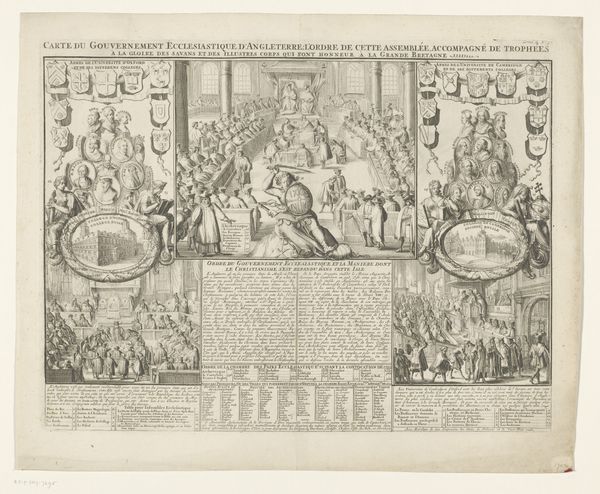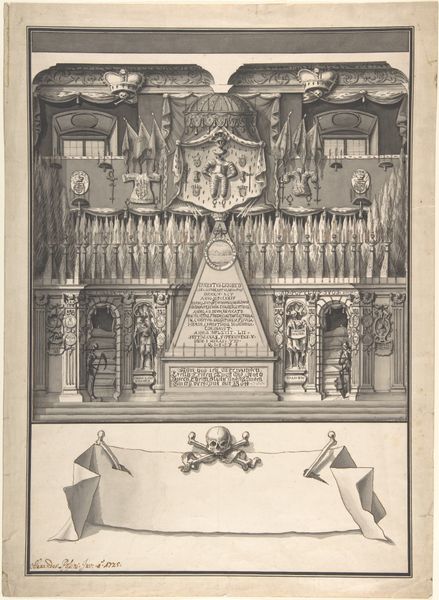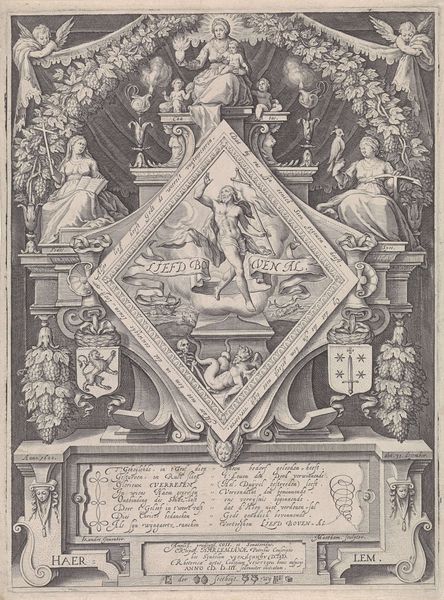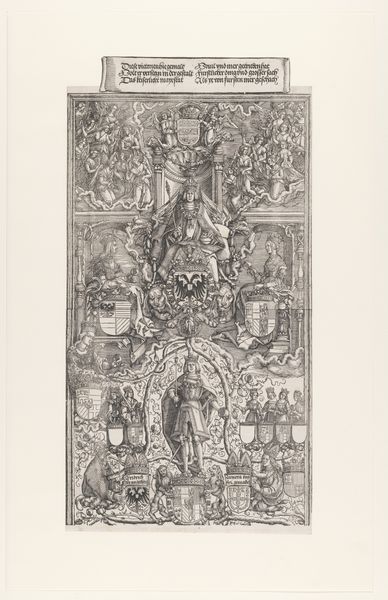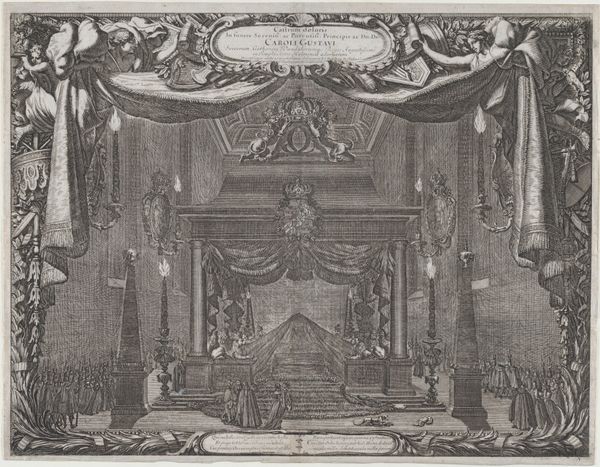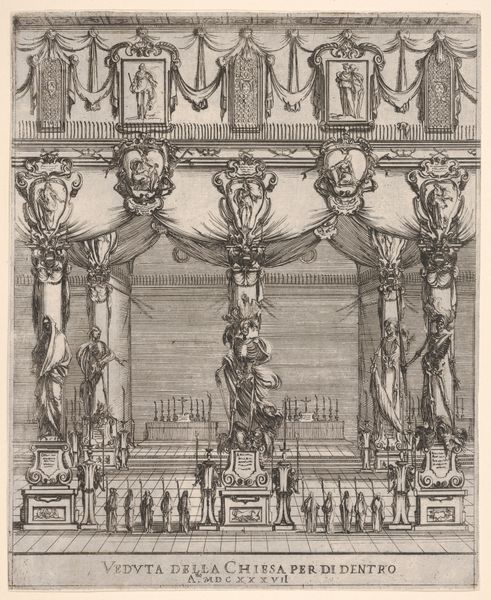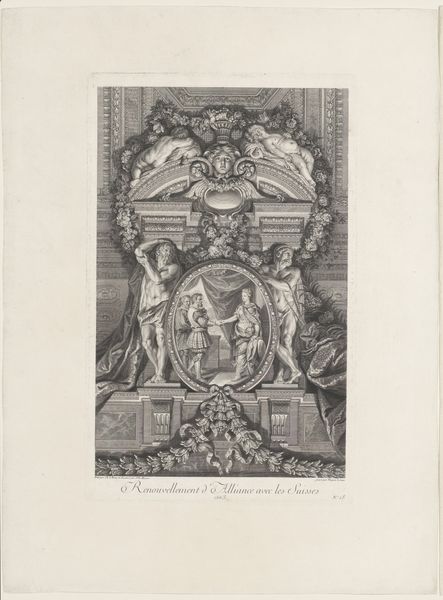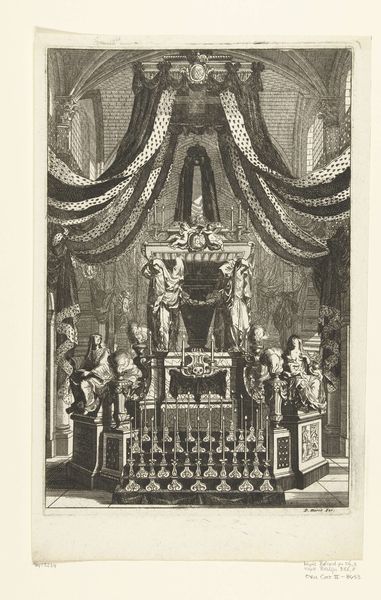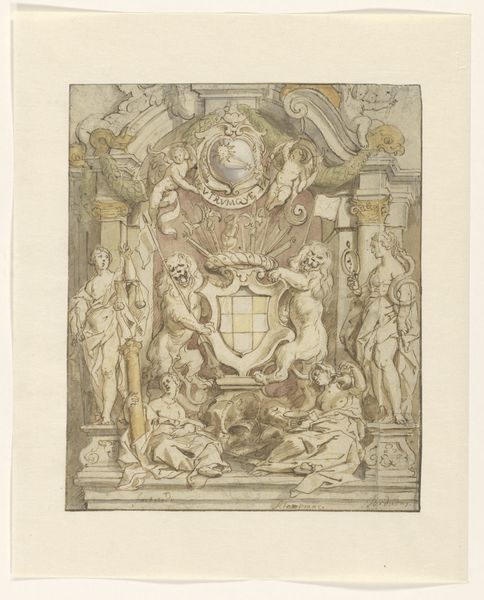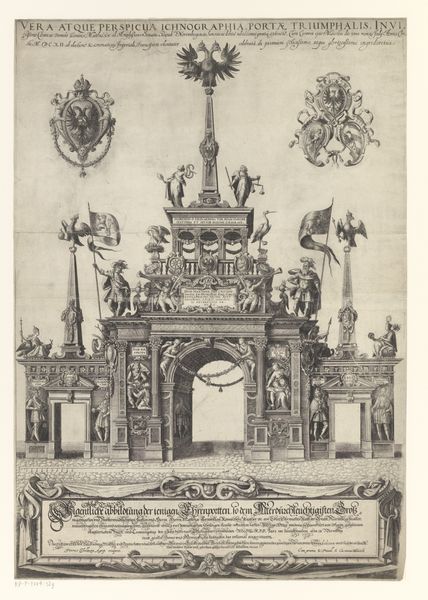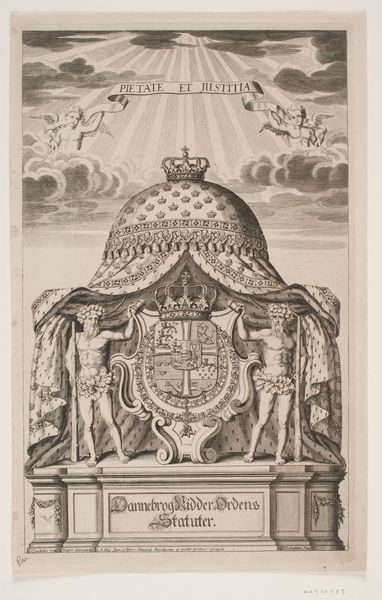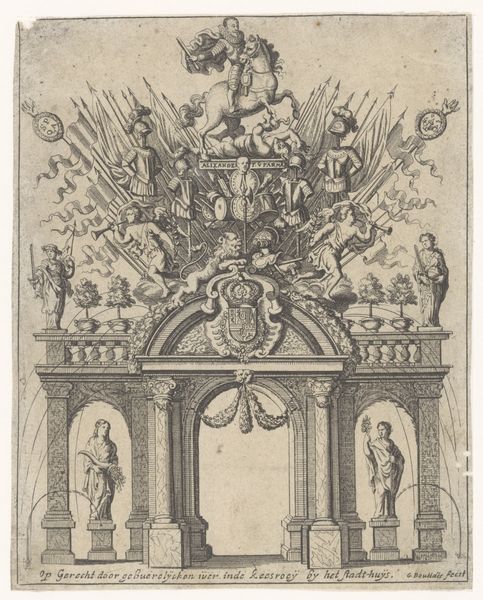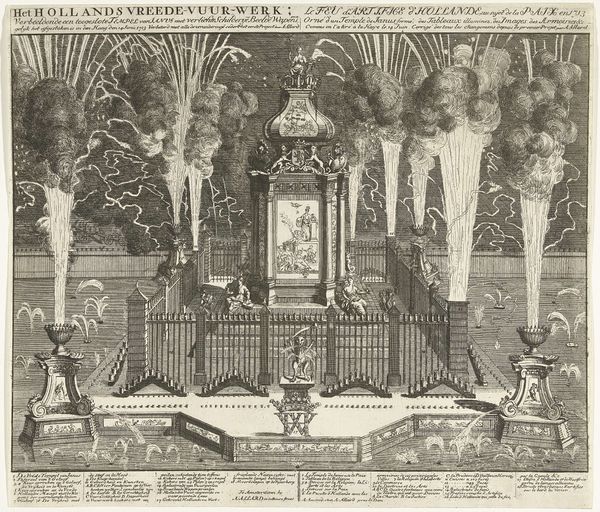
print, engraving
#
baroque
#
pen drawing
# print
#
figuration
#
line
#
genre-painting
#
history-painting
#
engraving
Dimensions: height 492 mm, width 368 mm
Copyright: Rijks Museum: Open Domain
This print, made in 1628 by an anonymous artist, depicts Charles I opening Parliament. The process of printmaking is itself an interesting one, as it is an early form of mechanical reproduction. The image is composed of meticulously engraved lines, made by cutting into a metal plate, inking it, and then pressing it onto paper. Look closely, and you'll notice the incredible level of detail, from the heraldic shields surrounding the central scene to the depiction of the king and his parliament. The act of engraving itself is labor-intensive, requiring skill and patience. Each line represents hours of work. In the 17th century, prints like these were a primary means of disseminating information and propaganda. The production of such an image was thus a careful combination of artistic skill and political purpose. Consider how the print medium allowed for broad distribution of this carefully composed image of power. It is a potent reminder of the role of materials and making in shaping political discourse.
Comments
No comments
Be the first to comment and join the conversation on the ultimate creative platform.
